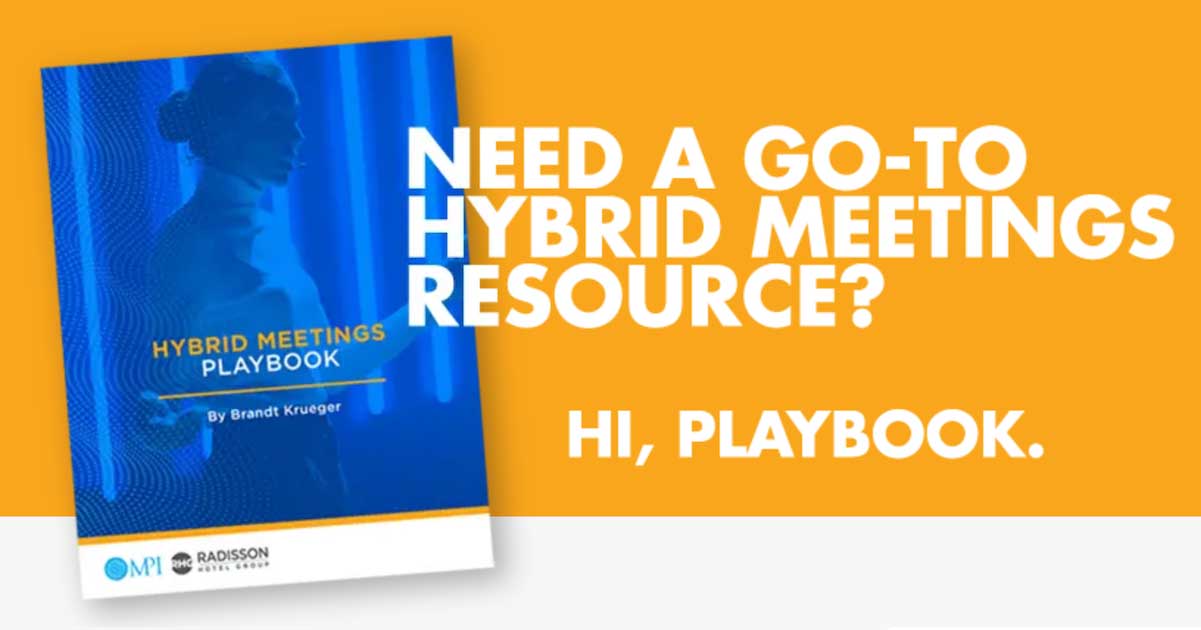The following is an excerpt from MPI’s new Hybrid Meetings Playbook, your go-to hybrid meetings guide sponsored by Radisson Hotel Group. Download the playbook today!
The No. 1 mistake meeting planners make when adding an online component is not clearly understanding the “why” of their events. Every event has a purpose, a reason for existing. Whether education that improves client satisfaction, networking that breaks down silos or inspiring employees to increase sales, each meeting or event has a unique set of goals and objectives.
Every major design decision stems from those goals, and how those goals previously served in-person may not have a direct analog in the digital world. Just replicating the in-person agenda isn’t necessarily going to work for your remote audience. You will have to find new and creative ways to achieve the same desired results.
MPI’s Hybrid Meetings Playbook. Need a go-to hybrid meetings resource? You’ve found it.
In addition to knowing your goals and objectives, it’s also important to know how you’re going to determine whether or not those goals were achieved. How do you know if your event was a success if you don’t have a way to measure it? How will you measure that success? While many events rely exclusively on attendee survey data or feedback from executives to determine worth, the real magic lies in finding objective, measurable results that prove goals are being met. After all (to paraphrase Lord Kelvin), to improve something, you must first be able to measure it.
Hybrid and online events offer the ability to gather and analyze data in an unprecedented way, allowing you to measure almost every possible aspect of the remote attendee experience. Not only can you determine exactly how many people attended online, but you can also tell exactly what sessions they attended, how long they watched and if they engaged. While badge scanners can tell you how many people attend an in-person breakout, rarely do they tell you how many people left halfway through.
How do you know if your event was a success if you don’t have a way to measure it?
If one of the goals of the event is education on a particular topic, you might want to offer polling on that subject at the beginning and end of the event, comparing the results to see what attendees learned and if they will apply it. If a goal is to facilitate networking, offer attendees a way to meet and engage, then gather statistics on the number of people who request connections. You’ll be able to directly measure which activities facilitated networking and which—flopped.
Of course, event organizers aren’t the only ones who are going to have goals and objectives for the event. Participants have their own goals, too. While the main purpose of an event may be a fundraiser for a local charity, attendees may want to network with likeminded philanthropists, or to elevate their social standing. While the event might be a product launch, the real reason people might attend is because it’s an opportunity to see friends or colleagues who they only see once or twice a year. The product might be the most important thing in your world, but not necessarily theirs.
Sponsors have different goals and objectives, too, as do exhibitors. When designing a successful hybrid event, you’ll need to keep all of these various stakeholders’ goals and objectives in mind alongside your own and that of your organization.
The Hybrid Meetings Playbook is sponsored by








